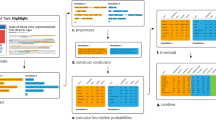Abstract
In this paper, we defend and extend a (simple) mathematical model of akrasia.
Similar content being viewed by others
Notes
See (Beecher 1858).
Kennett and Smith 1996. The oath would be an instance of what they term a “synchronic” control mechanism, while the building of the partition would be an instance of what they term a “diachronic” control mechanism. I call this article a counterpoint to mine because notwithstanding that its principal concern is how "fighting akrasia" is something one can even sensibly talk about, to which they give two answers in their sections 1 and 2, where we would prefer another answer involving different-order desires à la Frankfurt, thereby sidestepping their problem altogether, in their section 3 (‘How to exercise self-control’), they discuss how, after all, one does fight akrasia−by synchronic or diachronic mechanisms, and it is this section that shows how to defeat red (and black) buttons, by building in additional buttons.
Citation to Ainslie 1975.
See the Appendix for a further discussion of some current psychological thinking on this, which strongly supports the intuition behind the argument, and which may be considered a fuller defense against both the third and fourth objections.
Libet’s article itself runs from p. 529 through p. 539, following which are replies, with the author responding at the close to the replies taken together or one-by-one.
Libet (1995), p. 539.
Libet (1995), p. 564.
References
Beecher, H. W. (1858). Life thoughts (Transcribed). Boston: Philips, Sampson and Company, pp. 73–74.
Fulda, J. S. (1992). The mathematical pull of temptation. Mind, 101, 305–307.
Fulda, J. S. (1998). Partially resolving the tension between omniscience and free will: A mathematical argument. Sorites, 9, 53–55.
Kennett, J., & Smith, M. (1996). Frog and toad lose control. Analysis, 56, 63–73.
Lachenicht, L. G. (1993). A sceptical argument concerning the value of a behavioural solution for AIDS. South African Journal of Psychology, 23, 15–20.
Libet, B. (1995). Unconscious cerebral initiative and the role of conscious will in voluntary action. Behavioral and Brain Sciences, 8, 529–566.
McGraw-Hill Dictionary of Scientific and Technical Terms (6th ed., 2003), p. 887.
Author information
Authors and Affiliations
Corresponding author
Appendix
Appendix
The psychologist Benjamin Libet performed a large number of experiments in which he showed that voluntary motor actions are initiated in the brain unconsciously−i.e., before the person is aware of his own intention−but then can then be allowed to continue through to completion or vetoed. The body of Libet’s work is fascinating and has provoked many interesting and thoughtful replies. If his work ultimately generalizes as he believes it will, it would help explain the psychological underpinnings of “the mathematical pull of temptation,” and akrasia more generally, fields in which I am not competent to comment, only to observe and wonder. His findings may also explain why some systems of law require that a man be orally warned before commission of a capital crime and must then give a behavioral indication that he intends to commit the crime anyway before he can be executed by law.
We conclude with two selections from Libet (1995):Footnote 5
The concept of conscious veto or blockade of the motor performance of specific intentions to act is in general accord with certain religious and humanistic views of ethical behavior and individual responsibility. “Self-control” of the acting out of one’s intentions is commonly advocated; in the present terms this would operate by conscious selection or control of whether the unconsciously initiated final volitional process will be implemented in action. Many ethical strictures, such as the most of the Ten Commandments, are injunctions not to in act in certain ways. On the other hand, if the final intention to act arises unconsciously, the mere appearance of an intention could not consciously be prevented, even though its consummation in a motor act could be controlled consciously. It would not be surprising, therefore, if religious and philosophical systems were to create insurmountable moral and psychological difficulties when they castigate individuals for simply having a mental intention or impulse to do something unacceptable, even when this is not acted out....Footnote 6
Libet goes on to say, at the close of his reply to the commentators:Footnote 7
Finally, I accept Mortensen’s contention that the unconscious initiations of conscious intentions are deserving of “moral education,” to the extent that this can be efficacious in affecting the tendency to or the context in which our unconscious initiating impulses to act arise. However, when any such moral education takes the form of imparting feelings of guilt, shame, or malevolence for an unconsciously initiated process, it would seem to be demanding responsibility for something not directly manageable at the conscious level. Actual motor performance of the act is both consciously controllable (in my thesis) and ethically meaningful, since it is the motor act that has a real impact on one’s fellow man. Moral constraints on actual voluntary motor actions, rather than on the having conscious intentions [sic] or urges to act, would thus be based upon realistically achievable goals of responsibility.
Rights and permissions
About this article
Cite this article
Fulda, J.S., Milne, P. The Mathematical Pull of Temptation Revisited. Acta Anal 24, 91–96 (2009). https://doi.org/10.1007/s12136-009-0047-3
Received:
Accepted:
Published:
Issue Date:
DOI: https://doi.org/10.1007/s12136-009-0047-3



